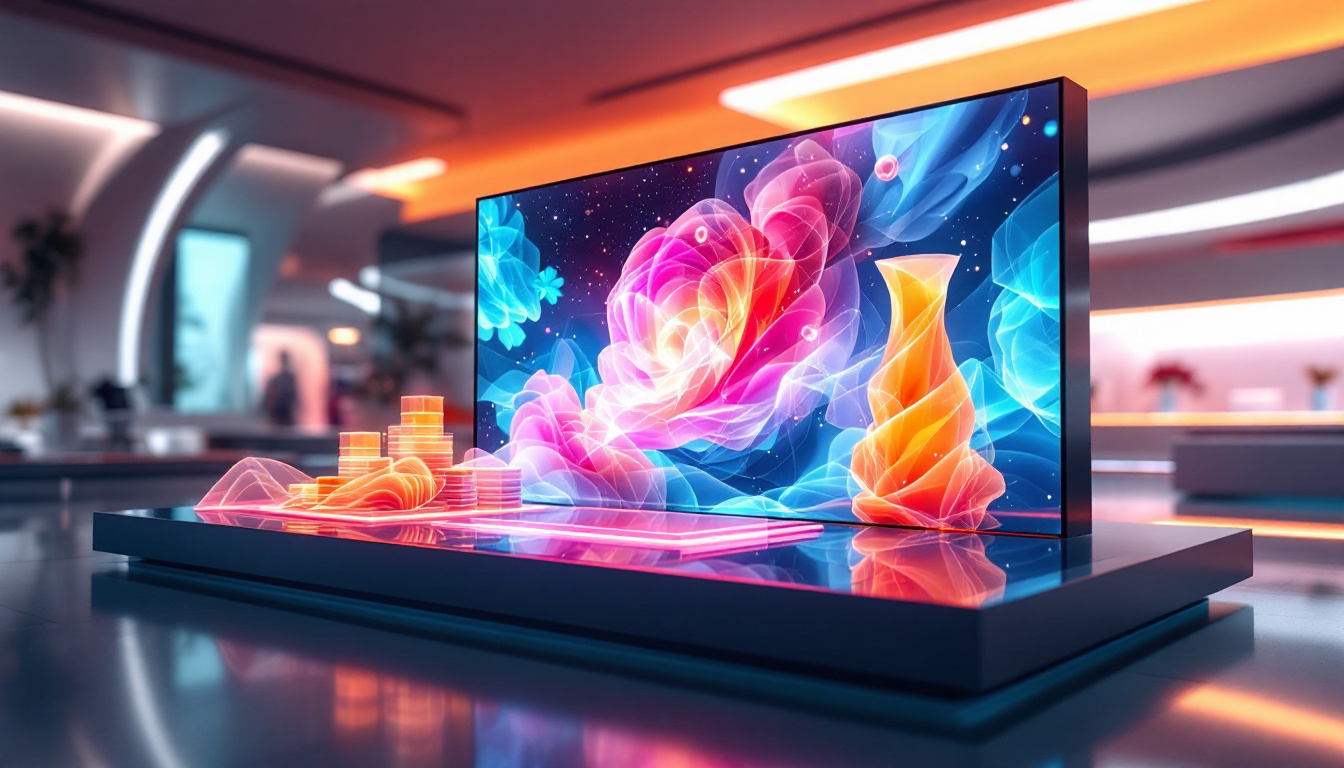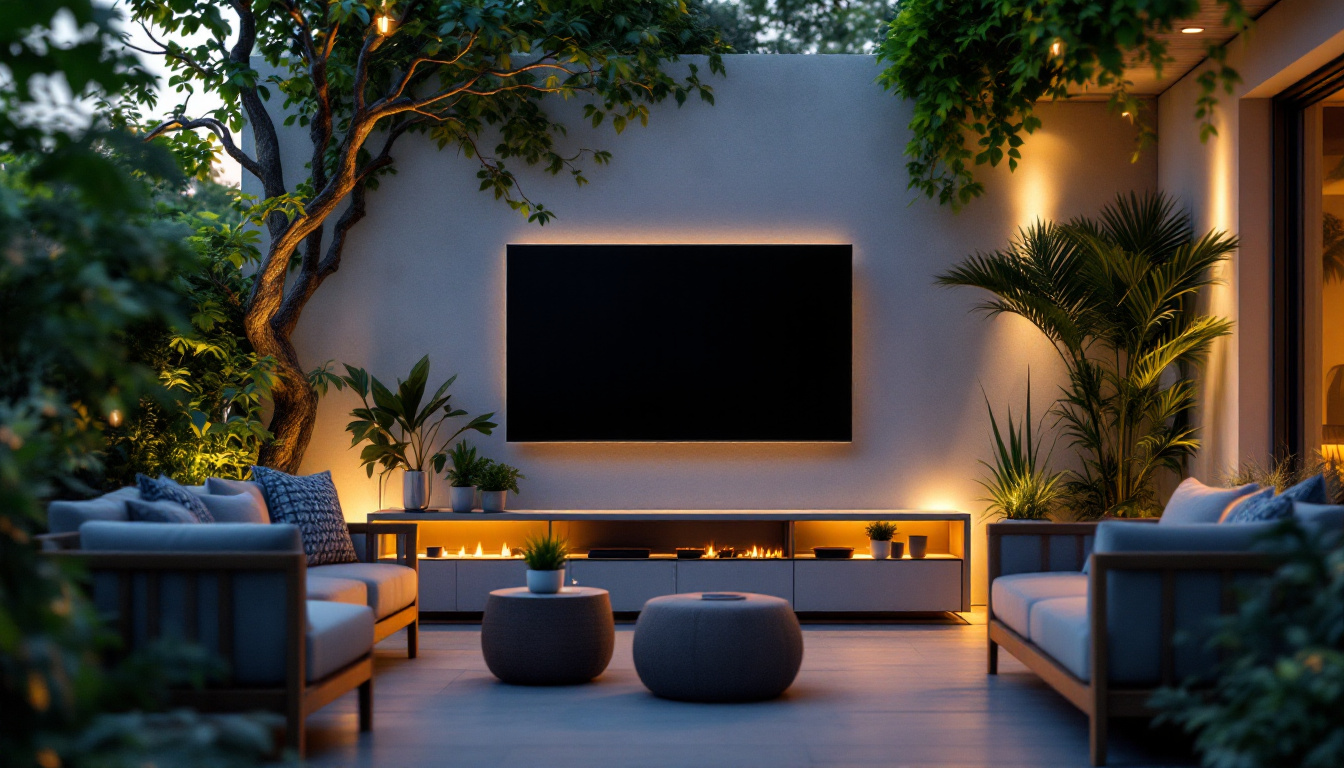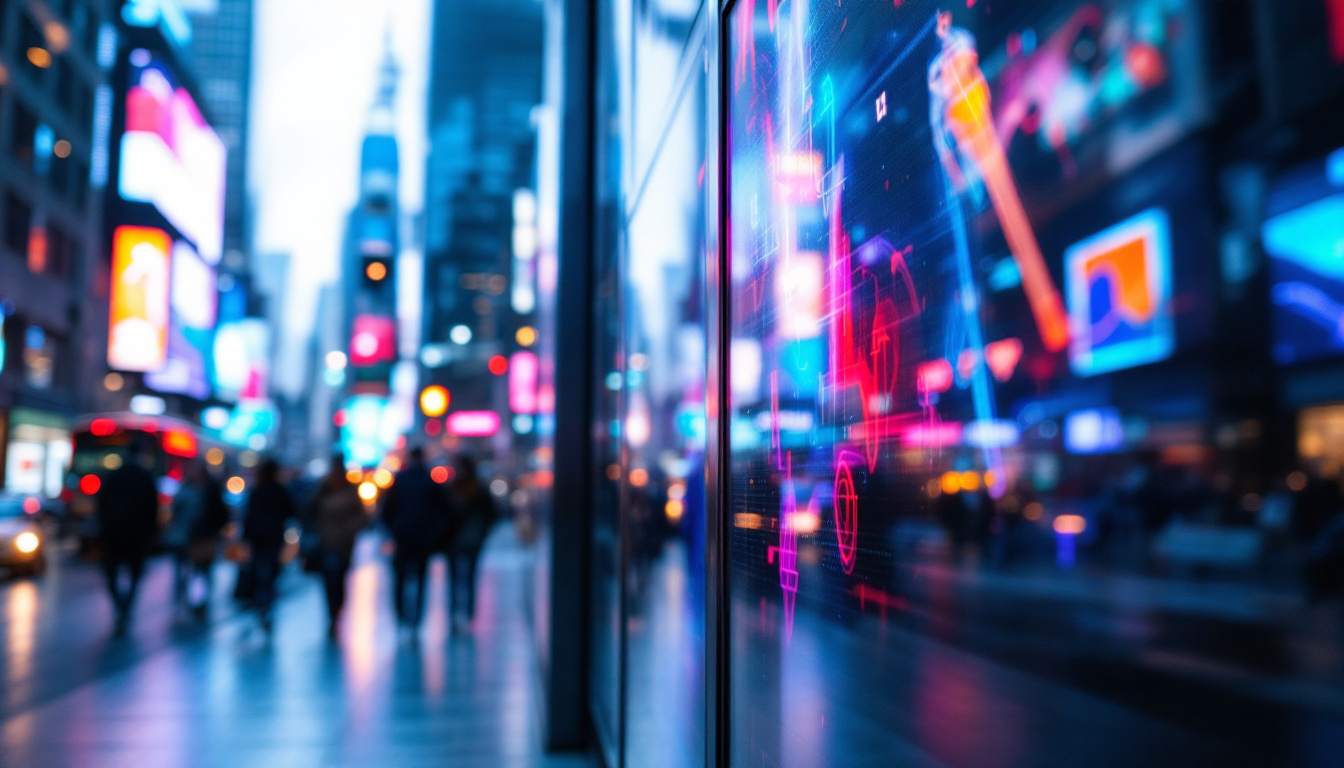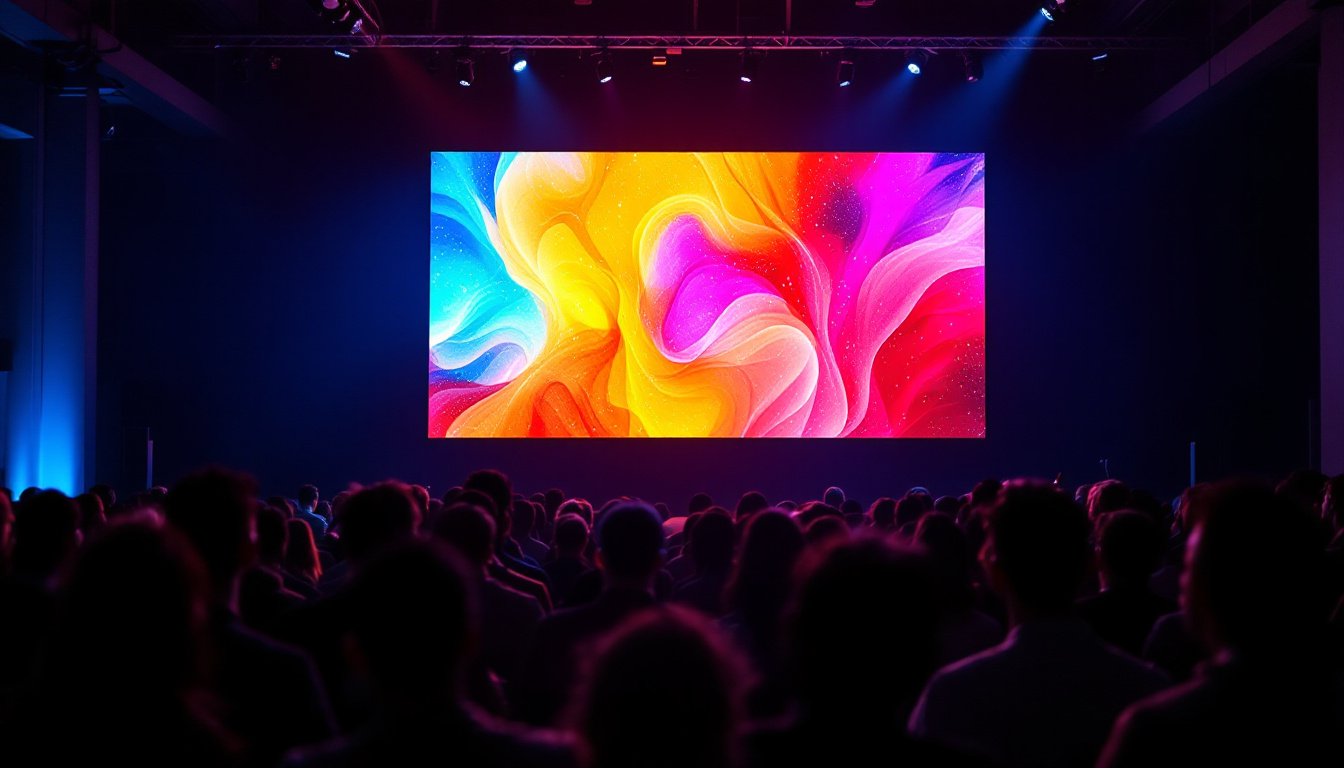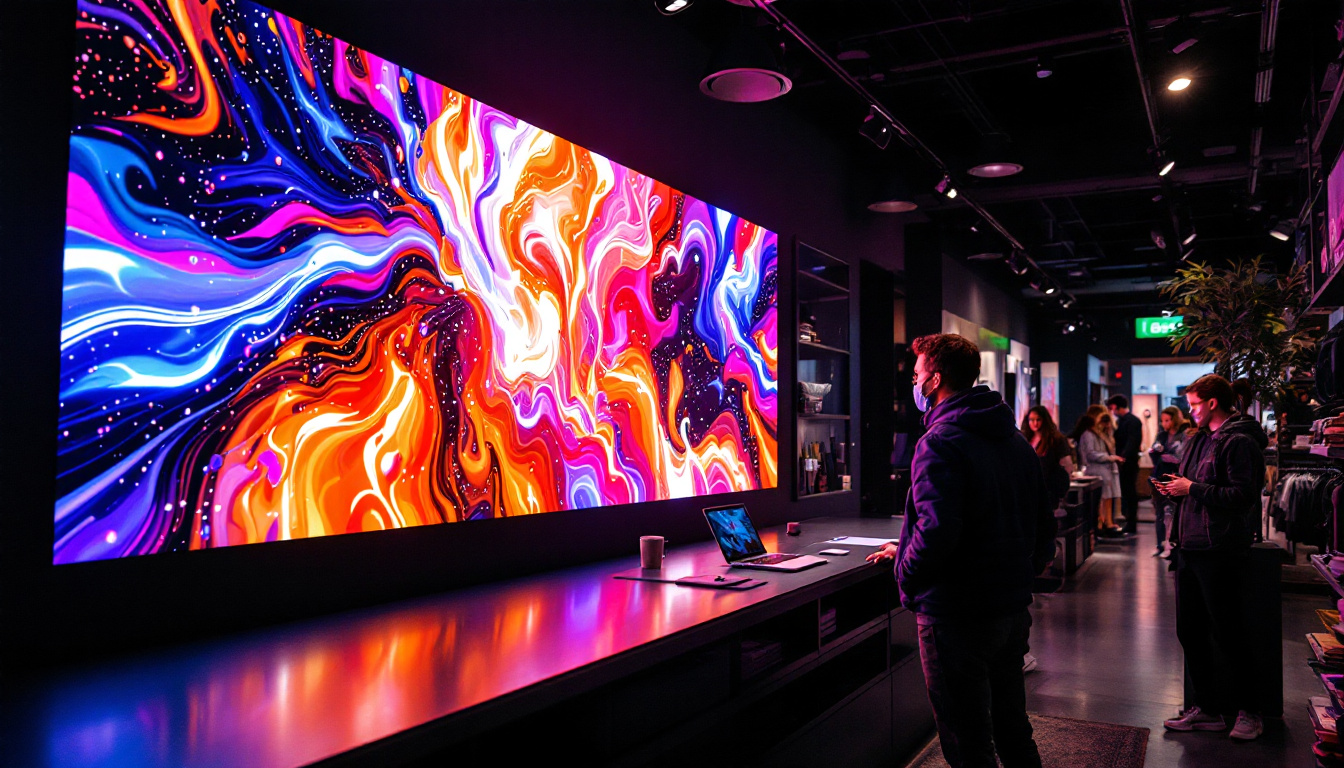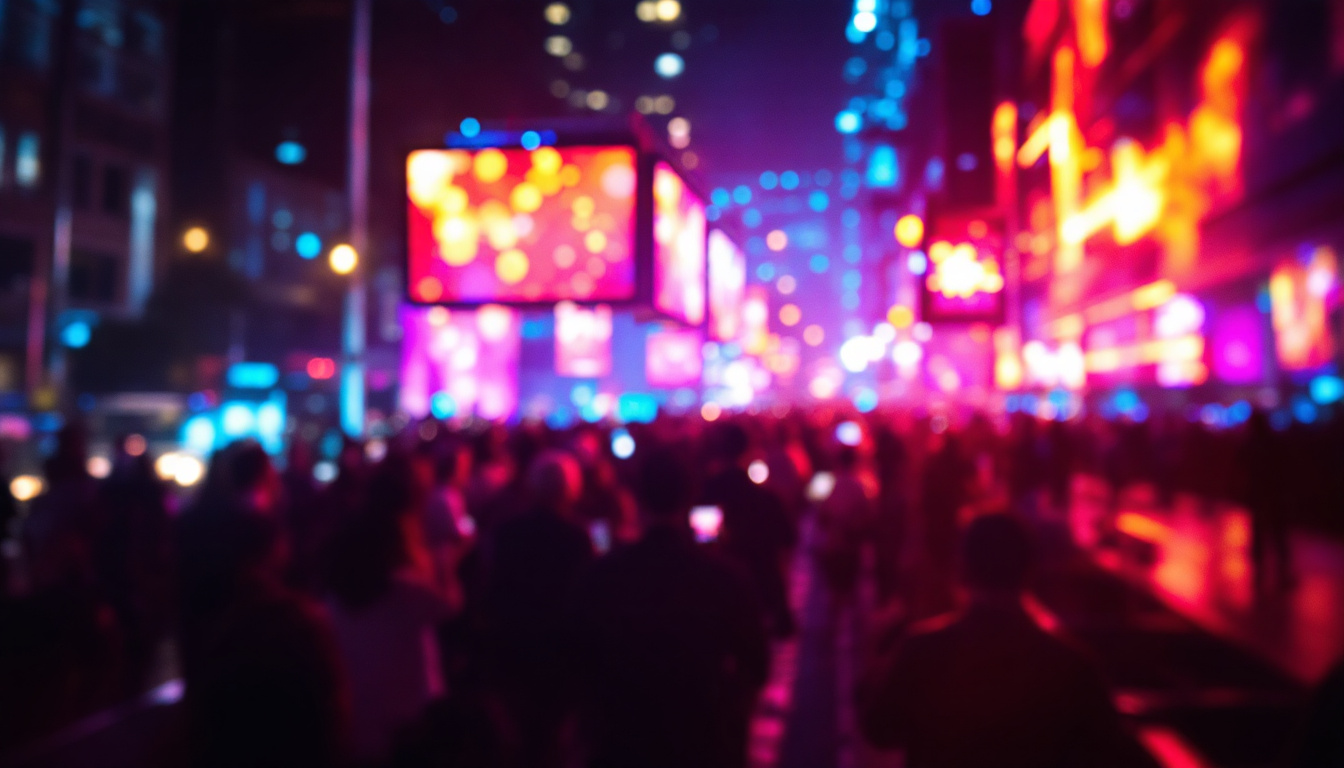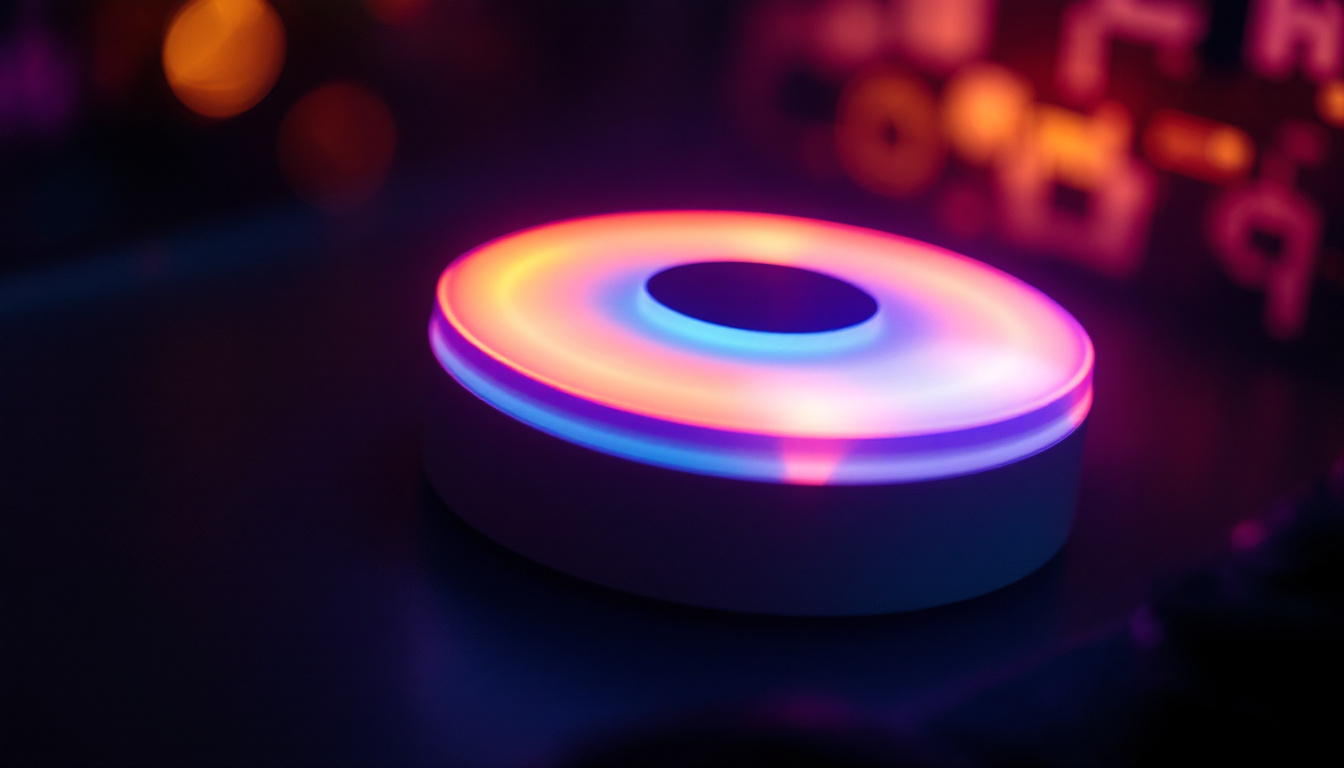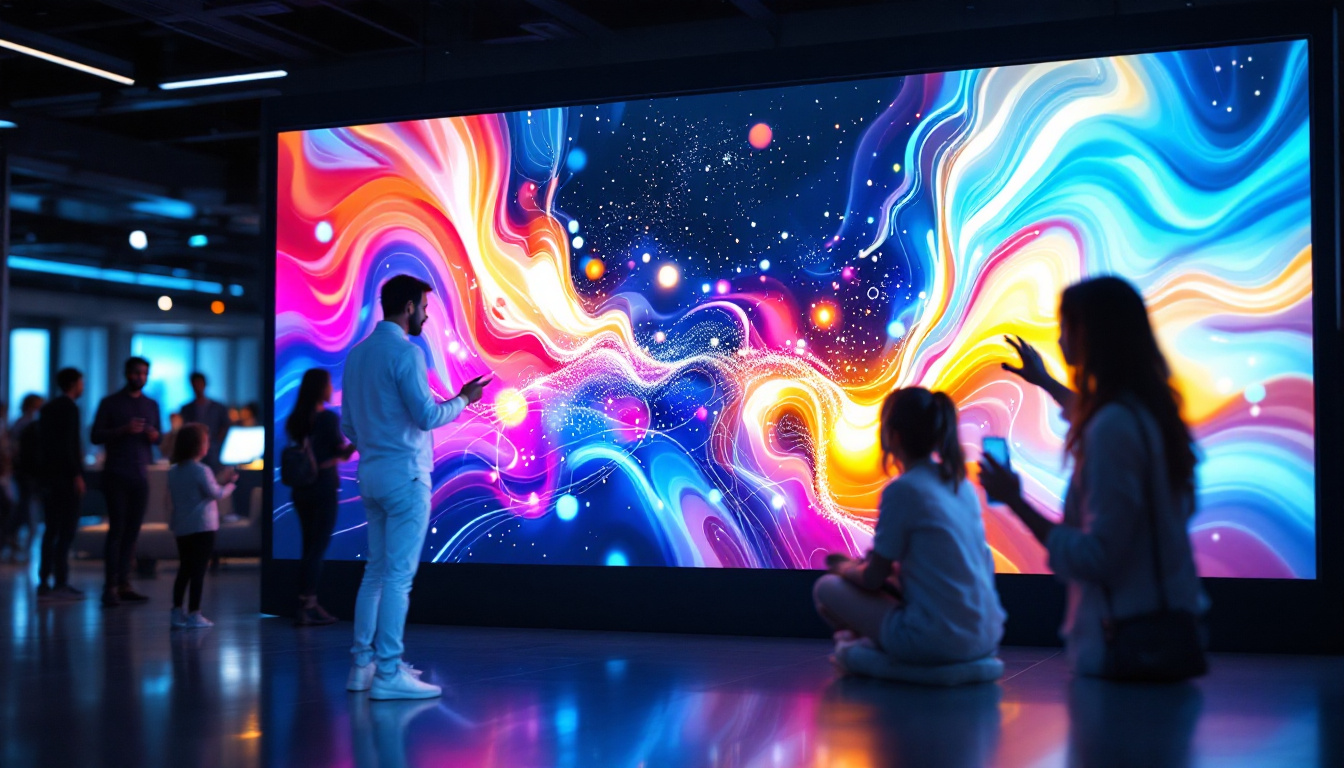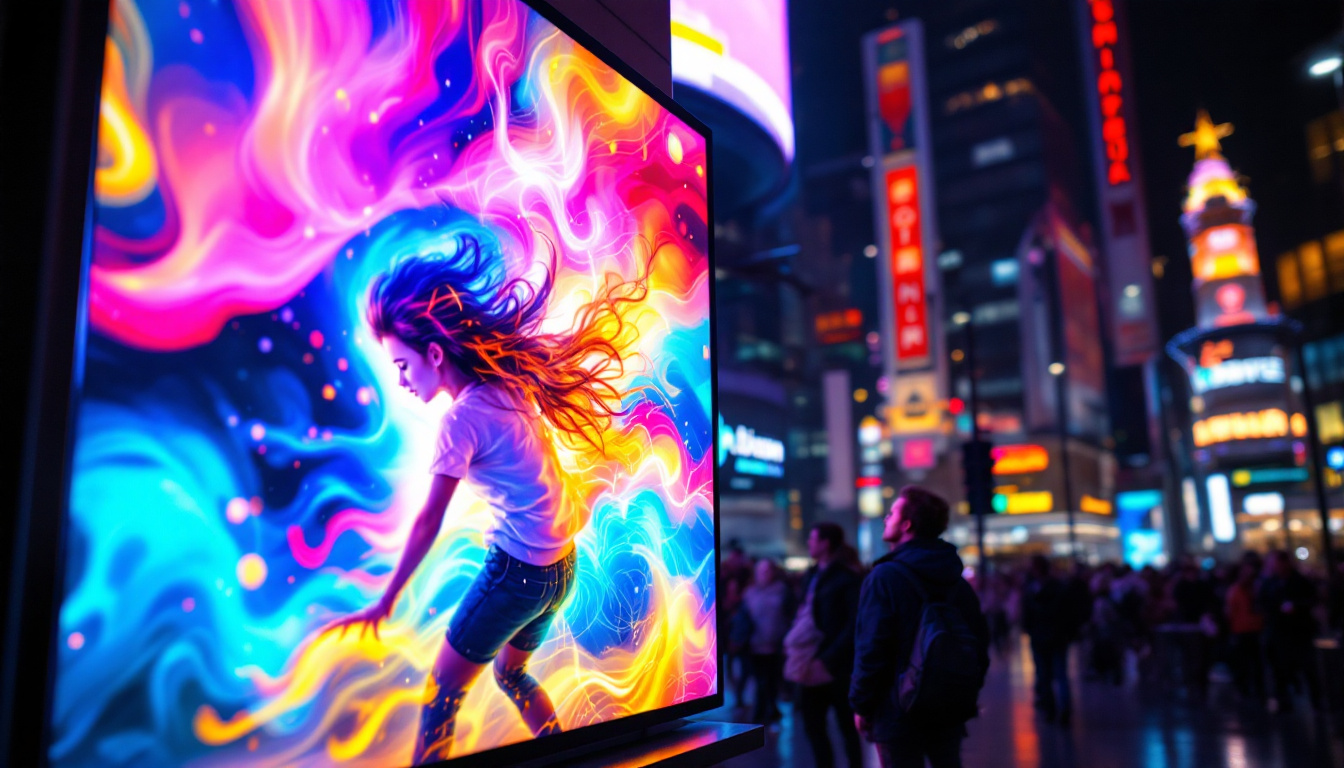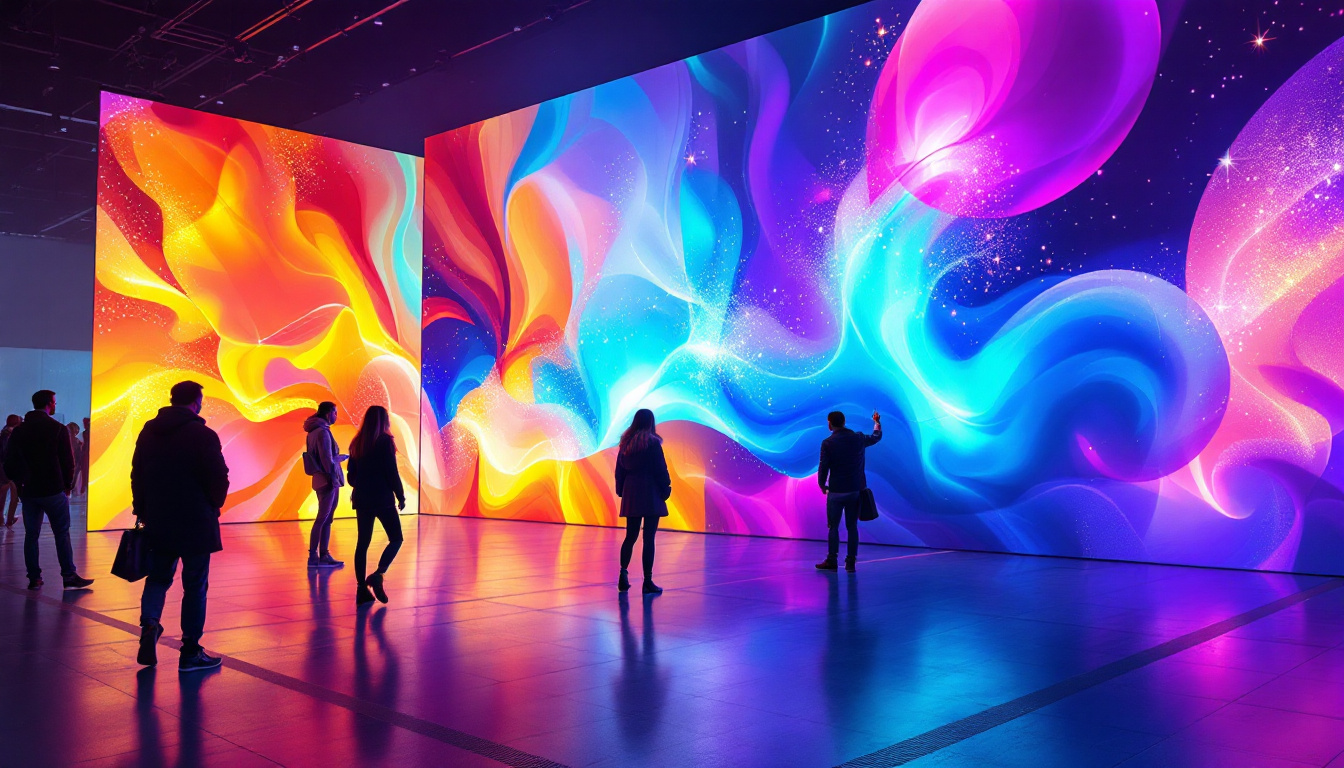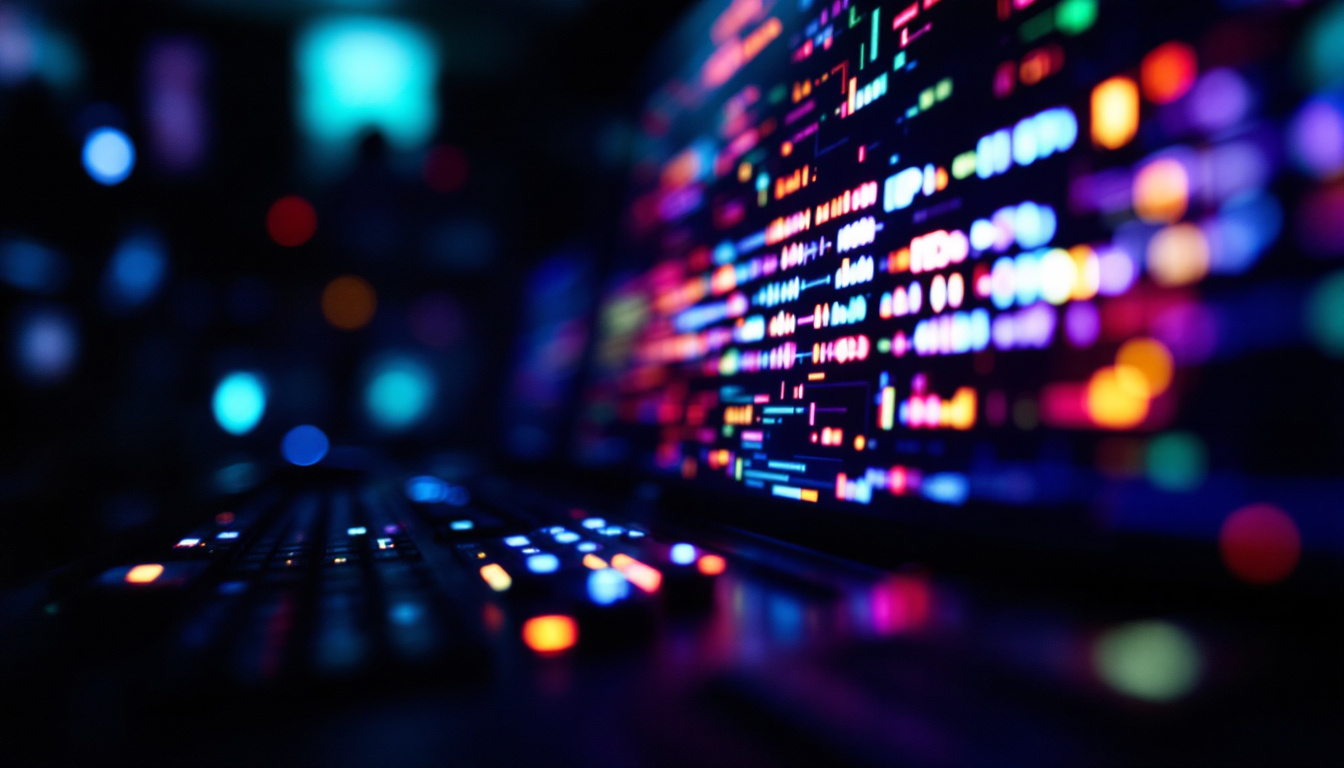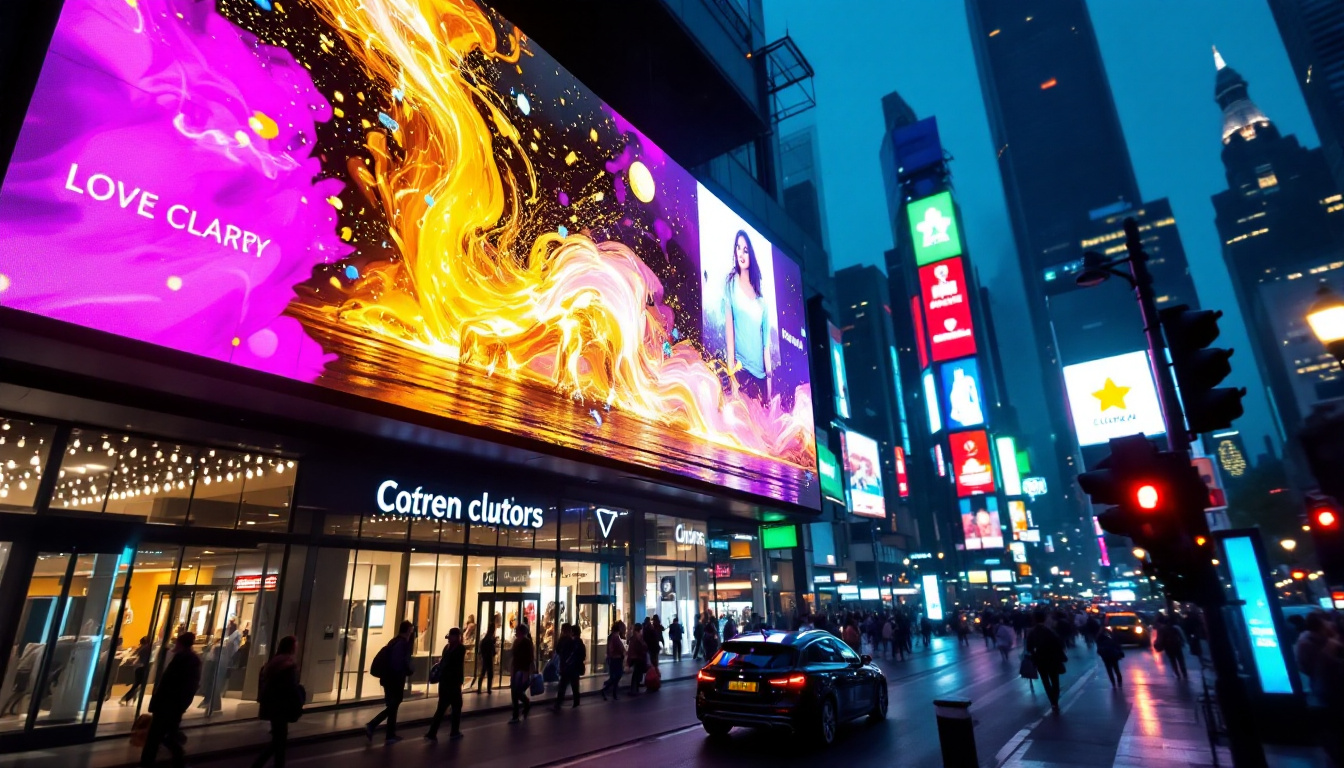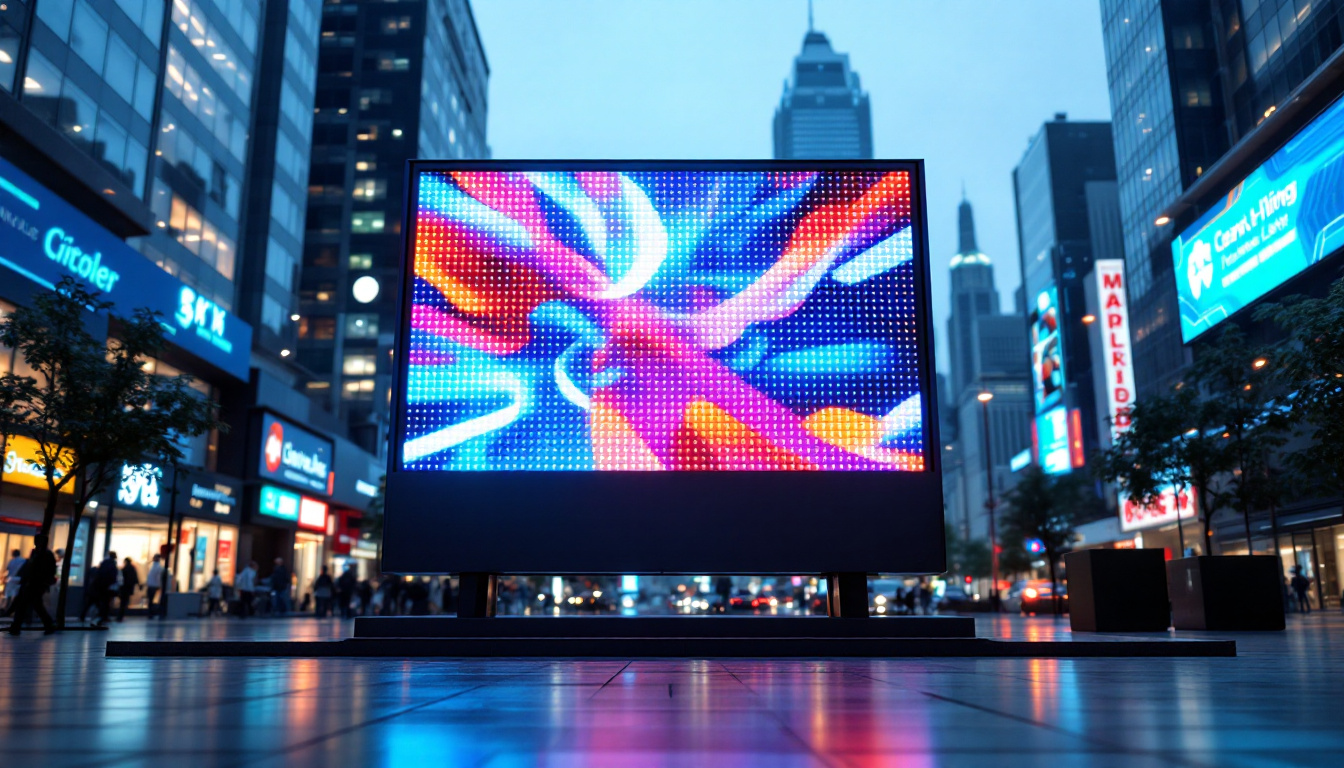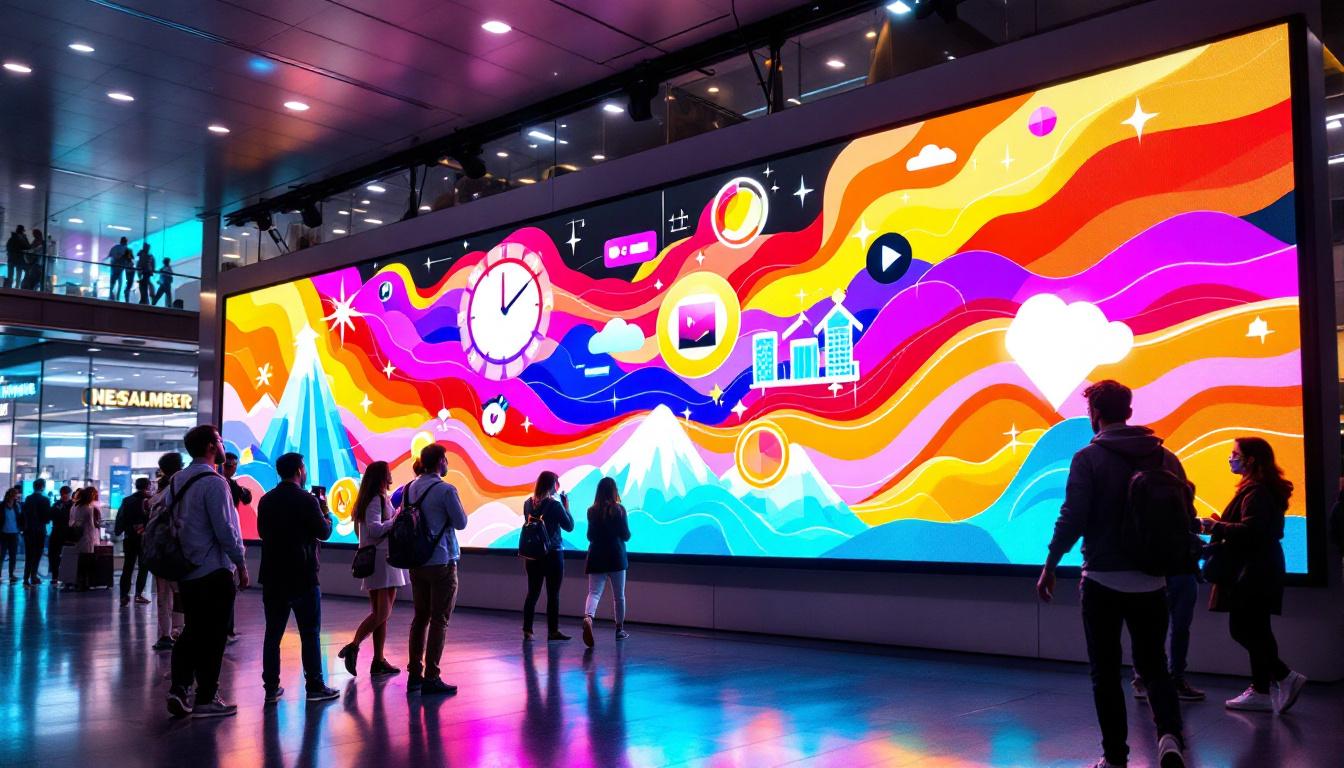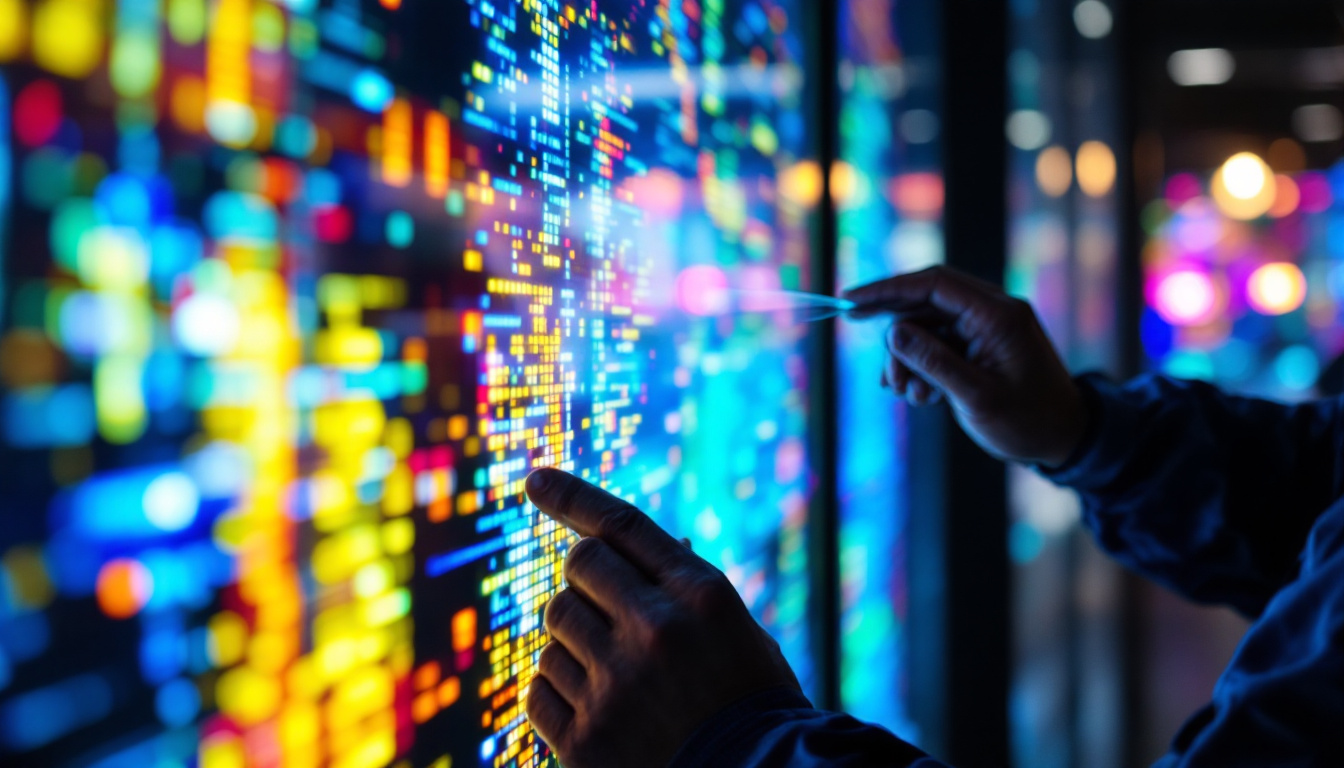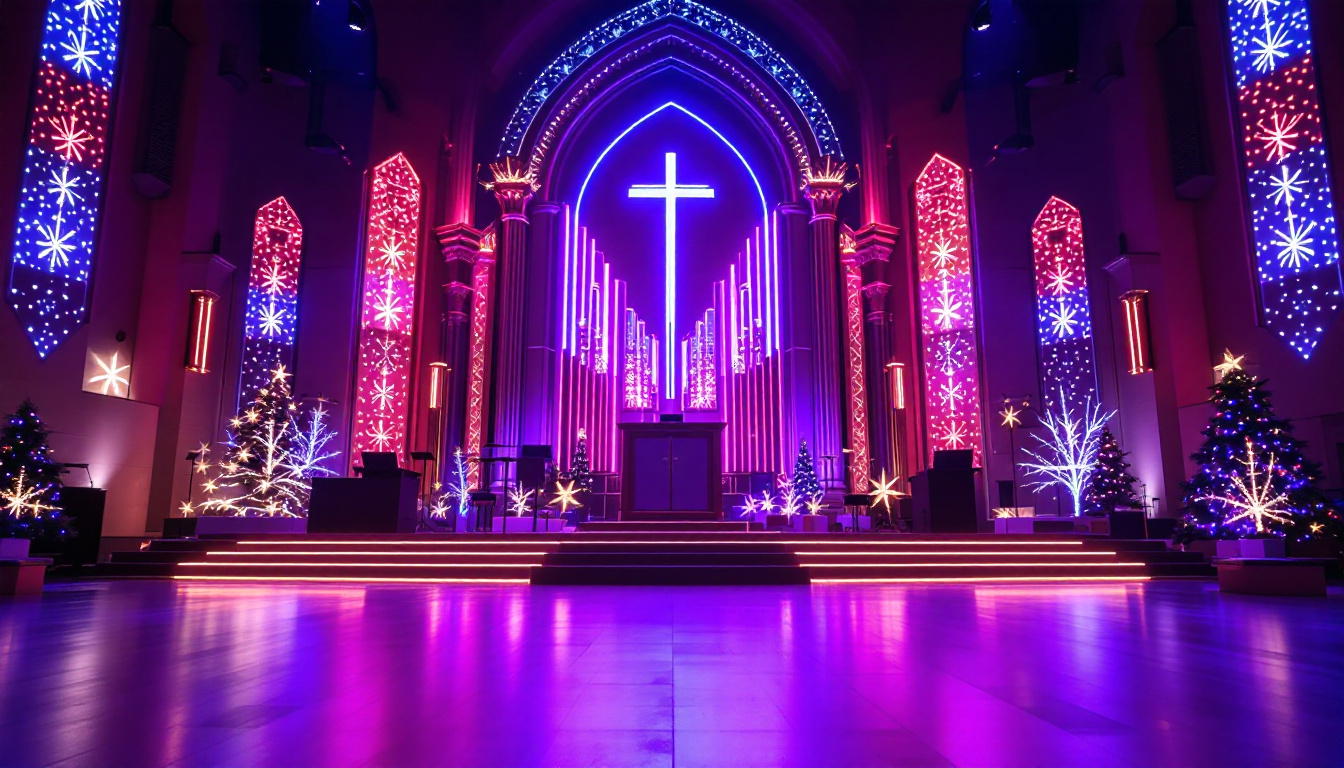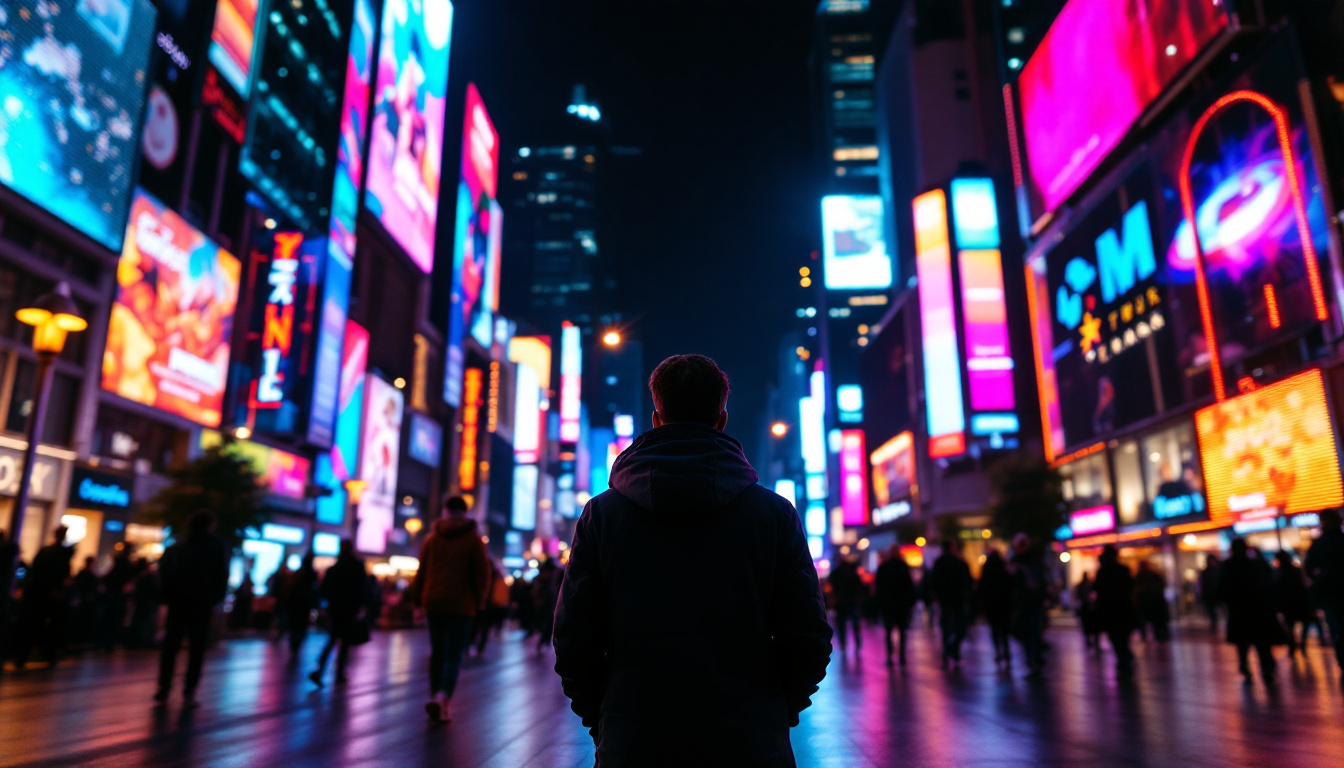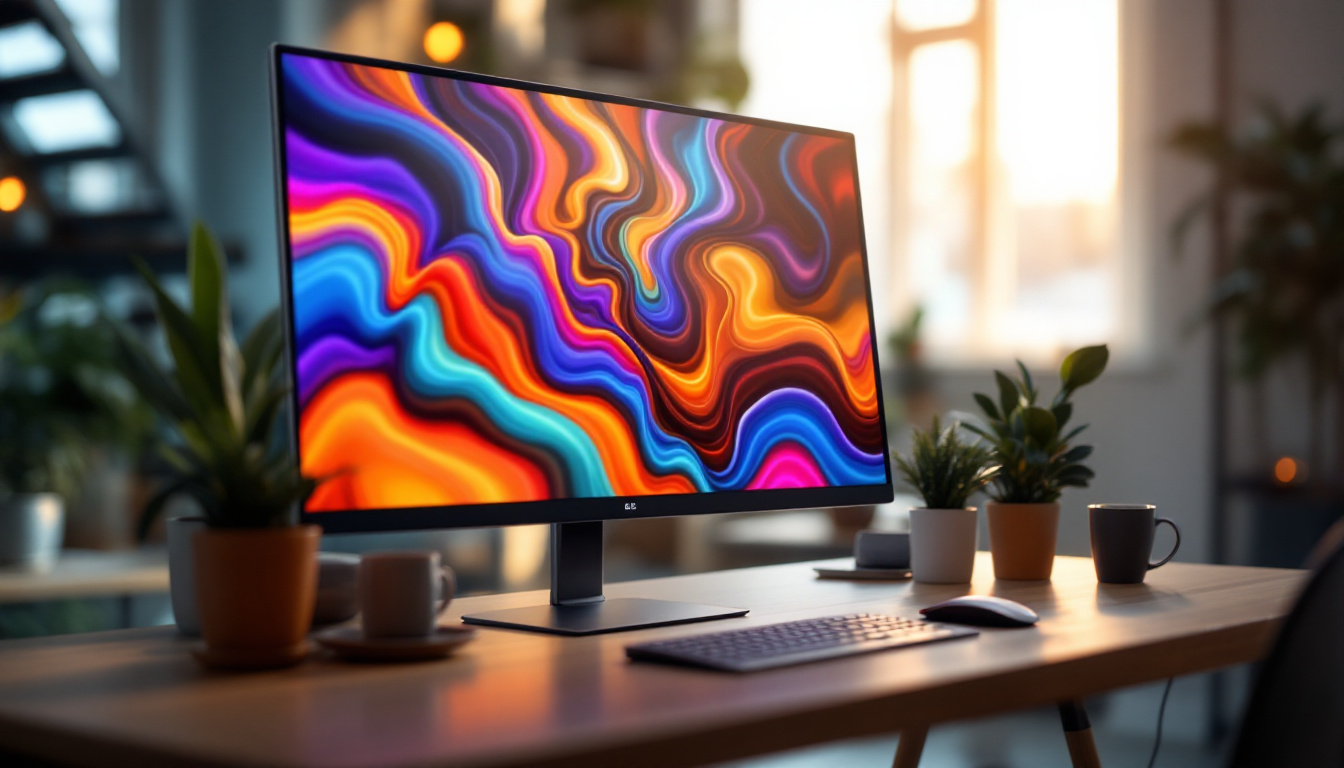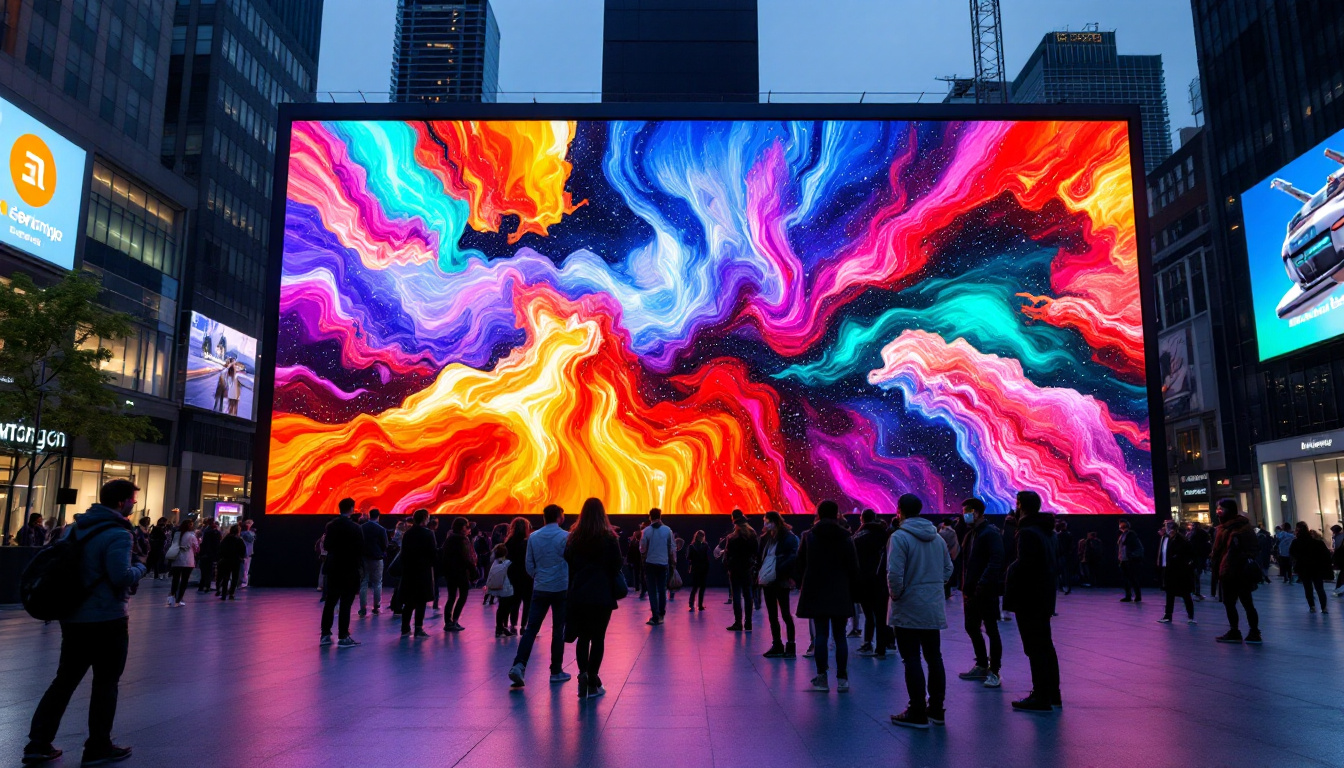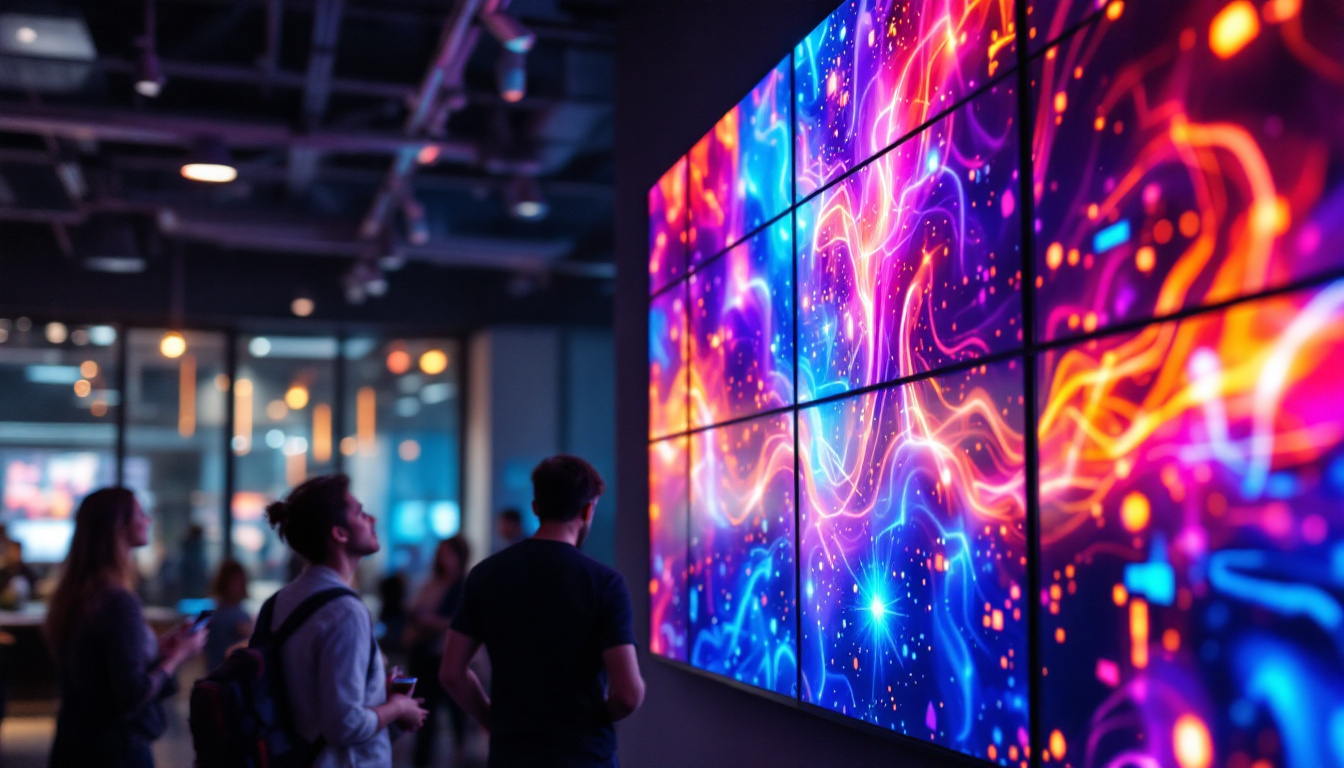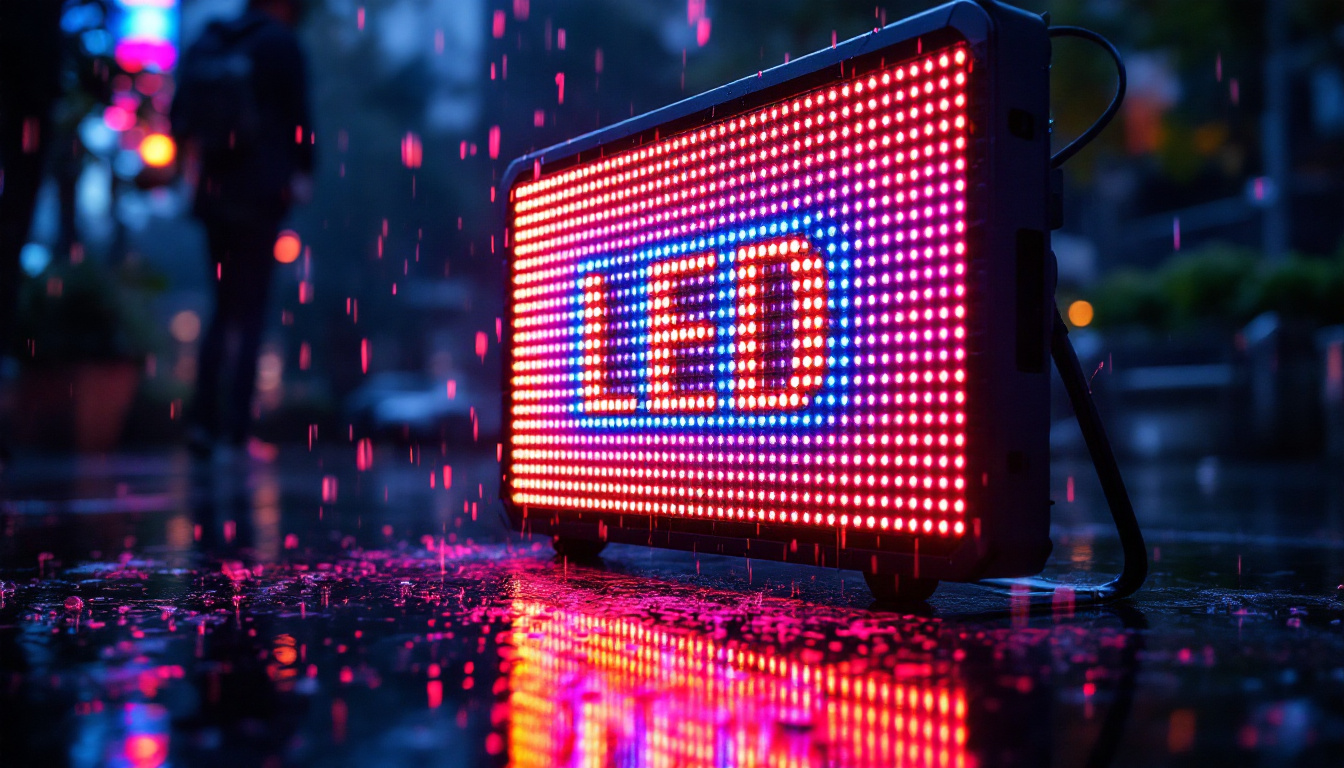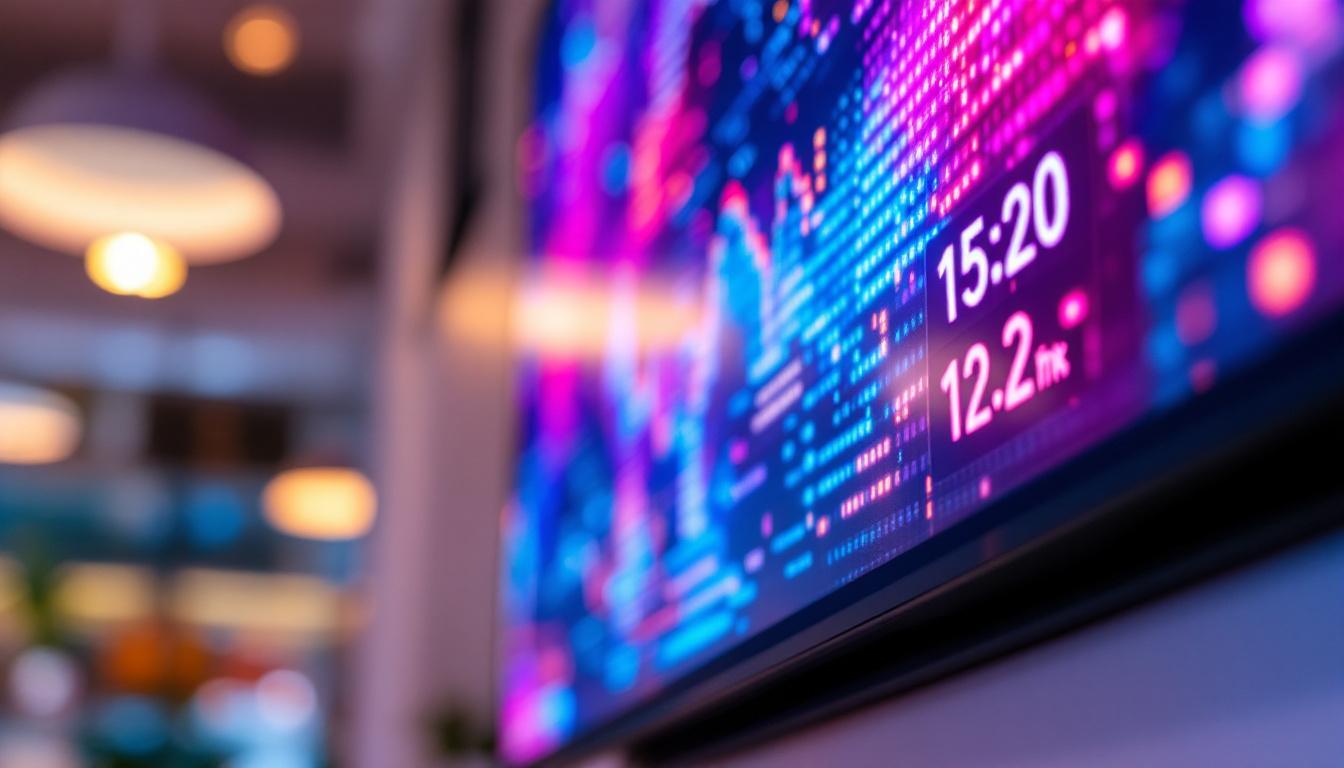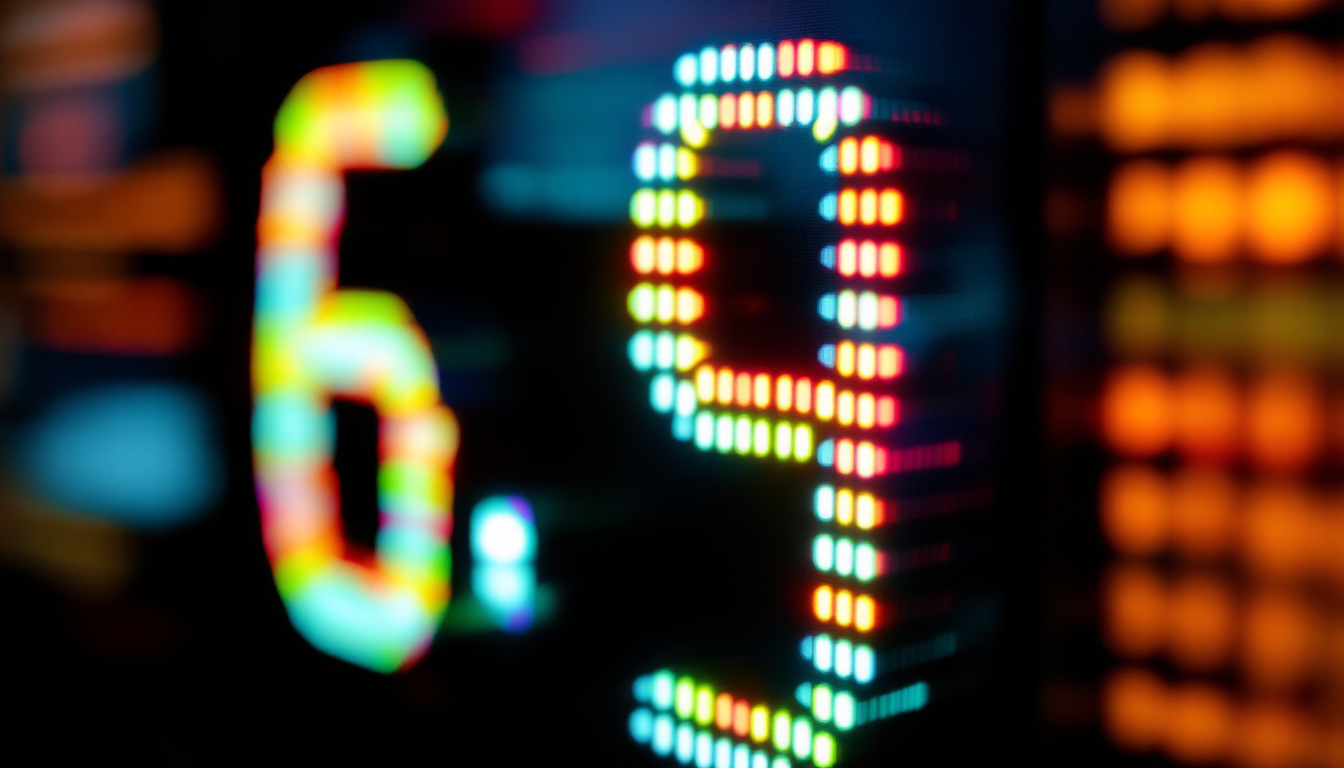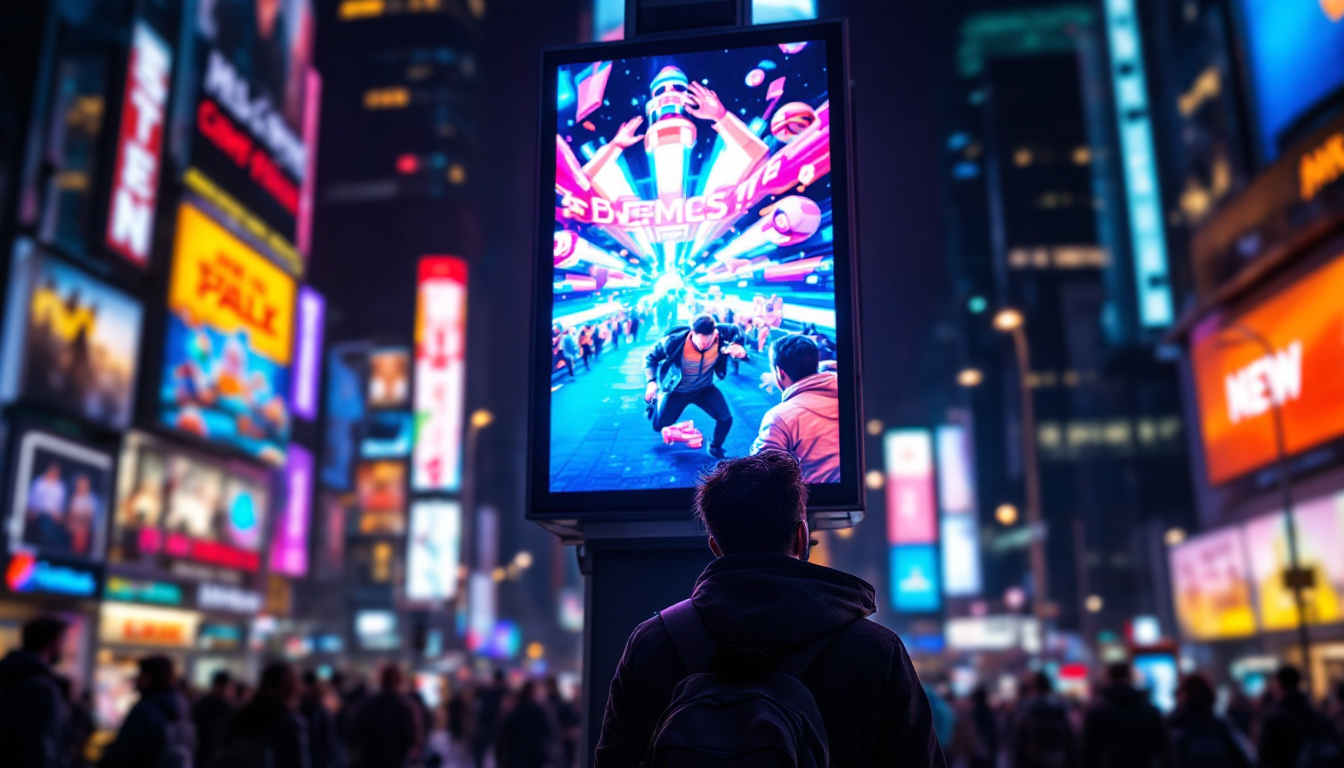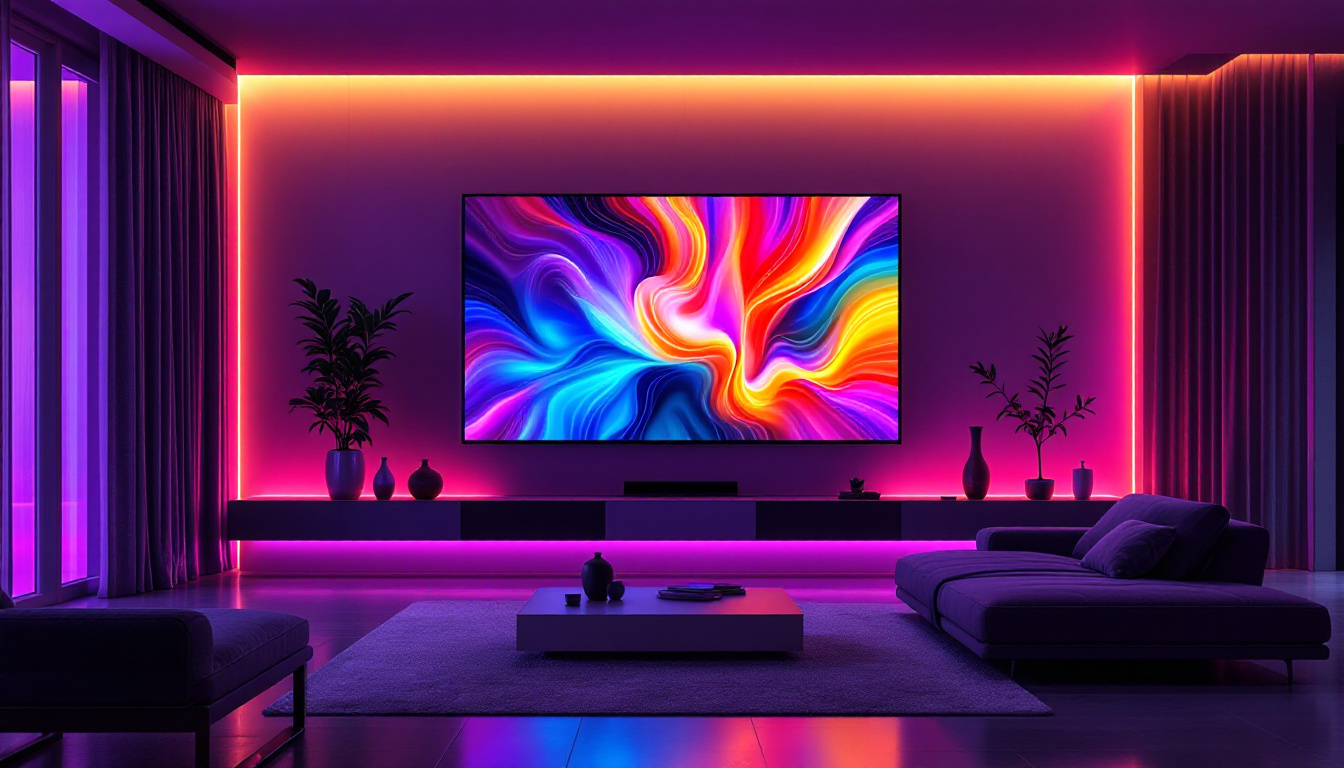In the modern era of technology, LED displays have become a ubiquitous part of our environment. From billboards to televisions, the vibrant colors and dynamic imagery produced by LED screens have transformed the way information is conveyed. This article delves into the intricacies of LED screen fabric, exploring its components, applications, and the technology that powers these impressive displays.
Understanding LED Technology
LED, or Light Emitting Diode, technology has revolutionized the display industry. Unlike traditional display technologies, which rely on backlighting, LED screens utilize individual diodes to produce light. This fundamental difference allows for greater energy efficiency, improved brightness, and a wider color gamut. Additionally, the longevity of LED technology means that users can enjoy vibrant displays for years without significant degradation in quality, making it a cost-effective choice in the long run.
The Basics of LED Screens
At its core, an LED screen is composed of numerous small light-emitting diodes arranged in a grid. Each diode corresponds to a pixel, and by varying the intensity of light emitted from each pixel, a wide range of colors can be produced. This pixel-based structure enables LED screens to display high-resolution images and videos, making them ideal for various applications. Furthermore, the rapid response time of LED technology allows for smooth motion rendering, which is particularly beneficial in dynamic environments such as gaming and sports broadcasting.
Types of LED Displays
There are several types of LED displays, each designed for specific applications. The most common types include:
- Direct View LED: These displays are made up of individual LED modules that are directly visible to the viewer. They are often used in outdoor advertising and large-scale installations, where their brightness and visibility in direct sunlight are crucial. Their modular nature also allows for easy scaling, making them suitable for everything from small storefronts to massive stadium screens.
- LED Backlit LCD: This technology combines traditional LCD screens with LED backlighting, enhancing brightness and color accuracy. The use of LED backlighting not only improves the overall picture quality but also allows for features like local dimming, which enhances contrast by adjusting the brightness of specific areas of the screen based on the content being displayed.
- Organic LED (OLED): Utilizing organic compounds to emit light, OLED displays offer superior contrast and flexibility, making them popular in high-end televisions and smartphones. The ability of OLEDs to achieve true blacks, due to their capacity to turn off individual pixels, creates an immersive viewing experience that is hard to match with other technologies. Moreover, the lightweight and thin profile of OLED screens allows for innovative designs, including curved and foldable displays.
Components of LED Screen Fabric
The construction of LED screen fabric involves several key components that work in harmony to produce high-quality visuals. Understanding these components is essential for grasping how LED displays function.
LED Modules
LED modules are the building blocks of any LED display. Each module contains a matrix of LEDs arranged in a specific pattern. These modules can be combined to create larger displays, allowing for scalability in various applications. The quality of the LEDs used in these modules significantly impacts the overall performance of the display. Furthermore, the pixel pitch, which refers to the distance between the centers of two adjacent pixels, plays a crucial role in determining the resolution and clarity of the images displayed. A smaller pixel pitch results in higher resolution, making it ideal for close viewing distances, such as in indoor environments, where detail is paramount.
Control Systems
Control systems are crucial for managing the content displayed on LED screens. These systems receive input from various sources, such as computers or media players, and convert the data into a format that can be displayed on the screen. Advanced control systems allow for real-time updates and remote management, making them essential for dynamic advertising and live events. Additionally, many modern control systems come equipped with software that enables users to schedule content, monitor display performance, and even diagnose issues remotely. This level of control not only enhances user experience but also ensures that the display operates at peak efficiency, maximizing its lifespan and reliability.
Power Supply and Cooling Systems
LED screens require a stable power supply to function effectively. The power supply not only provides the necessary electricity but also regulates voltage to prevent damage to the LEDs. Additionally, cooling systems are vital for maintaining optimal operating temperatures, as excessive heat can shorten the lifespan of the display. These cooling systems can take various forms, including passive cooling through heat sinks or active cooling using fans or liquid cooling solutions. The choice of cooling method often depends on the size and location of the display; for instance, outdoor displays may require more robust cooling solutions to combat the heat generated by direct sunlight. Proper thermal management is essential not only for the longevity of the LEDs but also for maintaining consistent brightness and color accuracy across the display, ensuring that the visuals remain vibrant and engaging over time.
Applications of LED Screen Fabric
LED screen fabric has a wide range of applications across various industries. Its versatility and adaptability make it a preferred choice for many display needs.
Advertising and Marketing
One of the most prominent uses of LED displays is in advertising. Billboards, storefronts, and event venues utilize LED screens to capture attention and convey messages effectively. The ability to change content quickly allows advertisers to tailor their messages to specific audiences and events.
Entertainment and Events
In the entertainment industry, LED screens play a crucial role in enhancing the viewer experience. Concerts, festivals, and sporting events often feature large LED displays that provide visuals and information to the audience. The high brightness and color accuracy of LED technology ensure that visuals remain vibrant, even in outdoor settings.
Corporate and Educational Use
LED displays are increasingly being adopted in corporate and educational environments. In corporate settings, they are used for presentations, video conferencing, and digital signage. Educational institutions utilize LED screens for interactive learning and to display important information to students and staff.
Benefits of Using LED Screen Fabric
The advantages of LED screen fabric extend beyond just visual appeal. Several key benefits make LED technology a preferred choice for many applications.
Energy Efficiency
One of the most significant benefits of LED technology is its energy efficiency. LED screens consume considerably less power compared to traditional display technologies, resulting in lower energy costs and a reduced environmental impact. This efficiency is particularly beneficial for large installations that operate continuously.
Durability and Longevity
LED displays are known for their durability. The solid-state nature of LEDs makes them resistant to shock and vibration, which is critical for outdoor applications. Additionally, with proper maintenance, LED screens can last for over 100,000 hours, significantly outpacing traditional display technologies.
High-Quality Visuals
LED technology delivers exceptional image quality. With high contrast ratios and vibrant colors, LED screens provide a superior viewing experience. The ability to display high-definition content makes them ideal for applications that require clarity and detail.
Challenges and Considerations
While LED screen fabric offers numerous benefits, there are also challenges and considerations that must be taken into account when implementing this technology.
Cost of Implementation
The initial cost of purchasing and installing LED displays can be significant. While prices have decreased over the years, high-quality LED screens still represent a substantial investment. Organizations must weigh the long-term benefits against the upfront costs to determine if LED technology is the right choice for their needs.
Maintenance Requirements
LED screens require regular maintenance to ensure optimal performance. This includes cleaning the display, checking connections, and monitoring the control systems. While maintenance is generally straightforward, it can be time-consuming, particularly for large installations.
Environmental Factors
For outdoor LED displays, environmental factors can impact performance. Sunlight, rain, and temperature fluctuations can affect visibility and functionality. It is essential to choose displays that are designed for outdoor use and to implement protective measures to mitigate these challenges.
The Future of LED Screen Fabric
The future of LED screen fabric looks promising, with ongoing advancements in technology and applications. Innovations are continually emerging, pushing the boundaries of what LED displays can achieve.
Advancements in Technology
As technology evolves, LED displays are becoming more sophisticated. Developments in micro-LED and mini-LED technologies are paving the way for even higher resolution displays with improved color accuracy and brightness. These advancements are expected to enhance the viewing experience across various applications.
Integration with Smart Technology
The integration of LED displays with smart technology is another trend on the rise. Smart LED screens can connect to the internet, allowing for real-time updates and interactive features. This capability is particularly valuable in advertising and corporate environments, where dynamic content can engage audiences more effectively.
Sustainability Initiatives
With growing awareness of environmental issues, the LED industry is focusing on sustainability. Manufacturers are exploring eco-friendly materials and recycling programs to reduce waste. As sustainability becomes a priority, LED technology is likely to play a significant role in creating greener solutions for display needs.
Conclusion
LED screen fabric has transformed the way visual information is presented across various sectors. Its energy efficiency, durability, and high-quality visuals make it an attractive option for businesses and organizations looking to enhance their communication strategies. As technology continues to advance, the potential applications and benefits of LED displays will only expand, making them an integral part of our visual landscape.
Understanding the components, applications, and future trends of LED screen fabric is essential for anyone looking to leverage this technology. Whether for advertising, entertainment, or corporate use, LED displays are set to remain at the forefront of visual communication for years to come.
Discover LumenMatrix’s Innovative LED Display Solutions
Ready to elevate your visual communication with cutting-edge LED technology? LumenMatrix is at the forefront of LED display innovation, offering a diverse range of solutions tailored to meet your specific needs. From Indoor and Outdoor LED Wall Displays to dynamic Vehicle and Sports LED Displays, our products are designed to captivate your audience and amplify your message. Experience the transformative power of LED screen fabric with LumenMatrix’s Custom, All-in-One, and Transparent LED Displays. Don’t miss the opportunity to create unforgettable visual experiences. Check out LumenMatrix LED Display Solutions today and see the difference for yourself.


